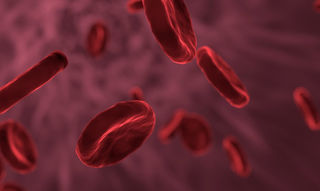Artificial Intelligence
AI Detects Brain Cancer from a Blood Test
Blood biopsy uses machine learning for faster diagnosis of brain cancer.
Posted October 14, 2019 Reviewed by Gary Drevitch

Imagine being able to know the probability of whether a persistent headache that you are experiencing is a symptom of something much worse through a simple blood test. Researchers affiliated with ClinSpec Diagnostics Limited, a spin-off from the University of Strathclyde in Glasgow, Scotland, and their colleagues developed patented technology that can detect brain cancer from blood samples. Using an innovative combination of artificial intelligence (AI) and spectroscopy, the U.K. researchers developed a method to detect brain cancer from a blood biopsy, and published their study on October 8, 2019 in Nature Communications.
Headaches are one of the most common symptoms of brain tumors, according to the American Brain Tumor Association. But while headaches are very common, brain cancer is not. A World Health Organization 2011 report estimates that 50 to 75 percent of adults worldwide between the ages of 18 and 65 had a headache in the past year. The number of new brain and nervous system cancer cases worldwide in 2018 was over 296,800 according to GLOBOCAN estimates — less than two percent of the over 18 million new cancer cases globally. To have a method to triage the odds can potentially provide reduction in health care costs from unnecessary and costly brain imaging scans, as well as provide timely detection of brain cancer.
Liquid biopsy is a non-invasive way of detecting diseases such as cancer through a sample of a patient’s bodily fluid such as blood, as opposed to a tissue sample. It is an emerging market technology that offers the hope of early cancer detection, and improved treatment. Last year, the worldwide liquid biopsy market was an estimated $2.4, billion according to an April 2019 report by BCC Research LLC, a market research firm founded in 1971 under U.S.-based management. By 2023, the global liquid biopsy market is expected to reach $6.1 billion, according to the same report.
In June 2016, the first liquid biopsy test approved for use by the U.S. Food and Drug Administration (FDA) was Roche Holding AG’s diagnostic test for non-small-cell lung cancer. Other companies in the liquid biopsy market sector include Illumina spin-off GRAIL, PapGene, Foundation Medicine, Personal Genome Diagnostics, Trovagene, Thrive Earlier Detection Corporation, Biocept, Genomic Health, RainDance Technologies, Qiagen, Guardant Health, and many other life sciences companies and biotechnology firms.
Many companies in the liquid biopsy market have a solution that uses next-generation sequencing (NGS) to look for cell-free circulating tumor DNA (ctDNA) and circulating tumor cells (CTCs) from blood biopsies. In contrast, the researchers at ClinSpec Diagnostics Limited use spectroscopy on blood samples to reveal biochemical signatures.
Spectroscopy is the science of splitting light (electromagnetic radiation) into a spectrum. In the ClinSpec Diagnostics Limited study, the researchers used attenuated total reflection (ATR)-Fourier transform infrared (FTIR) spectroscopy. First the process involves using infrared light to create biochemical fingerprints of a blood sample. According to the researchers, ATR-FTIR spectroscopy is a “simple, label free, non-invasive, non-destructive analytical technique” that can characterize “the biochemical profile of a sample without extensive sample preparation.”
Then AI machine learning was applied. The researchers trained a classification model using a support-vector machine model (SVM). SVMs are supervised learning models for classification and regression analysis. The SVM algorithm was trained on data from a retrospective cohort study of 724 patients. According to the researchers, their solution for the analysis of serum is able to “differentiate cancer and control patients at a sensitivity and specificity of 93.2% and 92.8%.”
“This work presents a step in the translation of ATR-FTIR spectroscopy into the clinic,” wrote the researchers in the study. “This step towards high-throughput analysis has implications in the field of IR spectroscopy as well as the clinical environment. Analysis of blood serum using this technique would fit ideally in the clinical pathway as a triage tool for brain cancer.”
Copyright © 2019 Cami Rosso All rights reserved.
References
Butler, Holly J., Brennan, Paul M., Cameron, James M., Finlayson, Duncan, Hegarty, Mark G., Jenkinson, Michael D., Palmer, David S., Smith, Benjamin R., Baker, Matthew J.. “Development of high-throughput ATR-FTIR technology for rapid triage of brain cancer.” Nature Communications. 08 October 2019.


